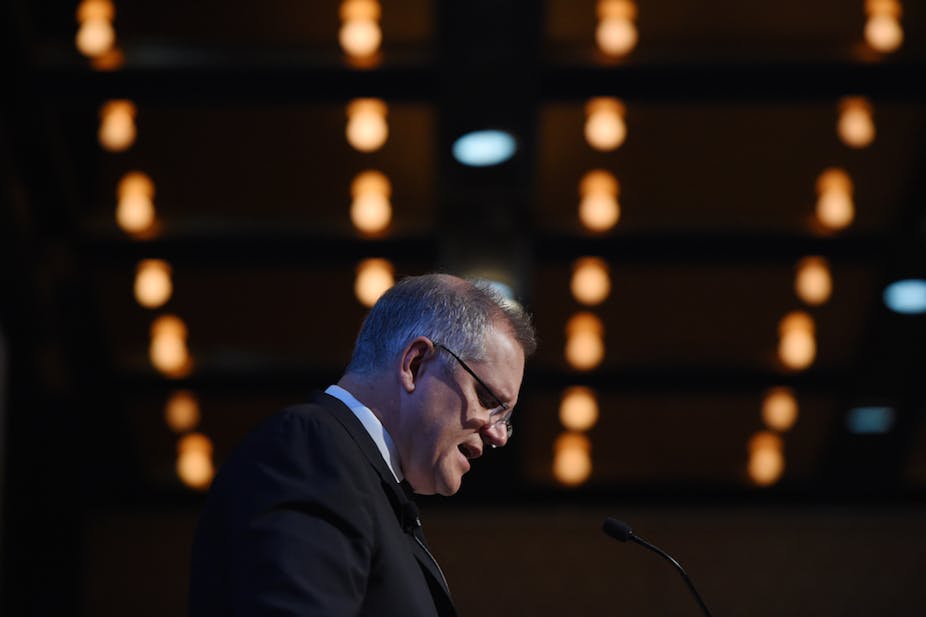The secretaries of Treasury and Finance have warned it is “crucial” for Australia to retain its AAA credit rating, and said surpluses won’t be possible without tax rises unless there is a “considerable effort” to reduce spending growth.
The Pre-election Economic and Fiscal Outlook, produced by the bureaucrats without government interference for release early in the election campaign, makes virtually no changes in the main figures that were in this month’s budget.
There has been a very small revision of the 2015-16 financial year’s projected deficit – from A$39.9 billion to A$40 billion, due to a reduction in the expected receipts from unclaimed superannuation monies.
But the secretaries, John Fraser from Treasury, and Jane Halton from Finance, have taken the opportunity to deliver some clear messages.
Pointing to debt being projected to reach historically high levels, they say these are not an immediate concern, given low interest rates and a growing economy.
“But should Australia experience a significant negative economic shock or increased interest rates or debt levels rise above current projections over the medium term, the debt burden will impose an increasingly significant cost on the fiscal and economic outlook.”
They say Australia’s maintenance of its top credit rating is crucial “to ensure the Commonwealth’s borrowing costs, and those across the economy more generally, are kept as low as possible”.
On spending and taxes, the secretaries say: “The medium-term projections show that, without considerable effort to reduce spending growth, it will not be possible to run underlying cash surpluses, say in the order of 1% of GDP, without tax receipts rising above 23.9% of GDP.”
The budget assumes tax receipts do not increase above this level over the medium term.
The secretaries say that even if payments were reduced from the levels projected at the 2016-17 budget to the long-term average of 24.9% of GDP by the end of the medium term, tax receipts would still need to rise to around 24.2% of GDP by 2026-27, well above the average of the past 30 years, to achieve a surplus of 1% of GDP.
The secretaries add that “reducing spending growth has proved difficult in practice”.
Labor seized on the comments. Shadow Treasurer Chris Bowen said he had been giving a similar warning about the AAA rating.
Bowen said the secretaries believed Australia had a revenue problem. “My words, but their sentiment, saying Australia will need to lift revenue if we are ever to get back to budget balance,” he said. What the Labor Party had been saying for years was now in writing from the secretaries of Treasury and Finance.
In fact the secretaries did not endorse a rise in tax.
The PEFO figures assume that unlegislated measures will be passed by parliament and take effect from their start date. Where legislation is not passed in time or is amended or rejected there is a risk the PEFO fiscal position will change, the document says. The net impact of the unlegislated policy decisions included in PEFO is about $18 billion over five years to 2019-20, it says.
PEFO says the Tax Commissioner advises that the increase in the $80,000 income tax threshold to $87,000 requires legislation before the change will be incorporated into the income tax withholding schedules.
“As the timing of this is uncertain. there is a risk that some of the revenue cost of this measure will slip from 2016-17 into 2017-18 (improving the 2016-17 bottom line with a commensurate worsening in 2017-18).”
The secretaries in their statement at the start of PEFO say the medium term projections adopt the usual practice of assuming that once to economy returns to potential it remains growing at that rate, which they describe as a benign assumption.
“Should Australia experience a significant negative economic shock, the fiscal position would be expected to deteriorate rapidly and not be consistent with the projections.”
The medium term projections were also underpinned by assuming annual average productivity growth equal to the average of recent decades. “Continued economic reform would be required in order to achieve this growth”, the secretaries say. But they add that “even if this rate of productivity growth were attained, living standards will rise more slowly than over recent decades”.
They say it is prudent for Australia to run a relatively conservative fiscal stance. “Successive governments have adopted such prudent fiscal strategies.”
PEFO said that relying on a rebound in world growth in the medium-term would be a “dangerous strategy” for Australia.

